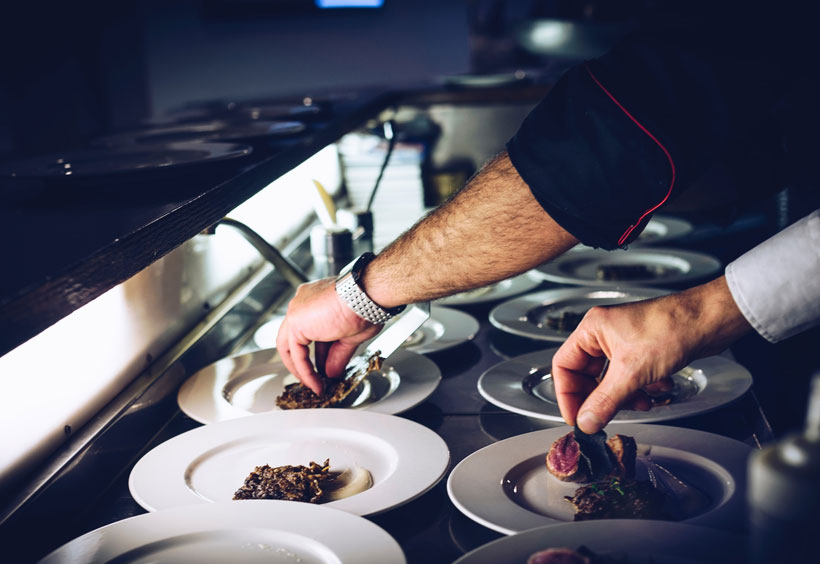How to Start a Wine Business
Sparkpush Editorial Team
Updated January 8, 2024
Edited by: Mike Shelby

Welcome to the wonderful world of wine! Starting a wine business is an adventure that combines passion, expertise, and a bit of that vino magic. Whether you dream of opening a cozy wine bar, starting a vineyard, or becoming a wine merchant, there’s a whole world of opportunities out there for wine enthusiasts. Let’s uncork the essentials of getting your wine business flowing.
Step 1: Find Your Niche in the Wine World
Getting started with your wine business begins with a single decision: identifying your niche in the vast and varied wine world. Reflect on what aspect of wine ignites your passion. Is it the romantic allure of cultivating grapes and producing your own label in a boutique vineyard? Or perhaps the thrill of running a buzzing wine shop, where each bottle tells a story? Maybe the modern appeal of an online wine club excites you, offering curated selections to a community of fellow wine lovers. Or, envision the joy of hosting tastings in a cozy, intimate room, guiding enthusiasts through a sensory journey.
Each of these paths – vineyards, retail, online clubs, or tasting rooms – comes with its own set of unique experiences and challenges. Understanding the nuances of each will guide you in shaping a business plan that resonates with your vision. Moreover, it will allow you to craft a marketing strategy that speaks directly to the heart of your intended audience. In the wine business, your niche is not just your market segment; it’s the story you choose to tell and the experience you want to share. So, swirl, sniff, and sip your way into the niche that feels just right.
Step 2: Pros and Cons of Starting a Wine Business
Pros:
- Passion Project: If wine is your passion, this business aligns your career with your love for the vine. It’s fulfilling to work in an industry that you’re enthusiastic about.
- Diverse Opportunities: The wine industry offers a variety of avenues – from vineyard operations to retail, each provides a unique business experience.
- Community and Culture: The wine world is filled with enthusiasts and experts, offering a chance to be part of a rich, globally connected community.
- Potential for Growth: With the right strategy, there’s significant potential for growth, both in the local market and through international exports.
Cons:
- Capital Intensive: Starting a vineyard or even a wine shop requires substantial initial investment. The cost of land, equipment, and inventory can be high.
- Regulatory Hurdles: The alcohol industry is heavily regulated. Navigating these regulations can be complex and time-consuming.
- Market Competition: The wine market is highly competitive, with established brands dominating. Differentiating your product can be a challenge.
- Slow Return on Investment: Particularly in winemaking, the return on investment can be slow. It takes time for vines to mature and for wine to age.
Starting a wine business is a blend of passion and practicality. It’s important to weigh these pros and cons to determine if this path aligns with your personal and financial goals.
Step 3: Soak Up the Knowledge
Launching a wine business is akin to enrolling in a continuous course of study where wine itself is the subject. This step is crucial: immerse yourself in the world of wine, where every drop tells a story of art, science, and history.
If you’re not already a wine expert, now is the time to become one. Consider enrolling in specialized wine courses – look for programs like WSET (Wine & Spirit Education Trust) or sommelier certifications that offer in-depth knowledge about wine varieties, tasting techniques, and the nuances of wine pairing. These courses not only provide valuable information but also lend credibility to you as a wine professional.
Attend wine tasting events and industry seminars. These gatherings are not just opportunities to taste different wines but also to network with industry experts and learn from their experiences. Understanding the subtleties of varietals, the complexities of vineyard management, the intricacies of wine production, and staying abreast of market trends are all essential elements of your wine education.
This step is about building a strong foundation of knowledge. The more you know about wine, the better equipped you’ll be to make informed decisions in your business, whether it’s selecting the right inventory for a wine shop or understanding the best practices for vineyard management.
Step 4: Craft a Robust Business Plan
Now that you’ve swirled and sipped the knowledge of vino, it’s time to distill it into a solid business plan. This step is vital; think of it as charting the map for your wine company. A well-crafted strategy is the backbone of your venture, providing clarity and direction.
Start with your business model. Are you focusing on direct sales, wholesale, online retail, or a physical storefront? Each model comes with its unique set of dynamics and operational requirements. Clearly define your approach and how it fits into the broader wine market.
Next, conduct a thorough market analysis. Who are your competitors? What are the current trends in the wine industry? Understanding the landscape will help you position your business effectively and identify your unique selling points.
Financial projections are the next pour. This includes startup costs, ongoing operational expenses, and revenue forecasts. Be realistic but also optimistic; the wine business can be fruitful, but it often requires patience and strategic investment.
Develop your marketing strategies. How will you reach your target audience? Consider digital marketing, events, partnerships, and PR campaigns. Your marketing should tell the story of your brand and appeal to the sensibilities of wine lovers.
Finally, your operations plan outlines the day-to-day running of your business. From sourcing wines to managing inventory and customer relations, ensure every aspect is carefully planned.
Like a fine wine, a good business plan requires time, thought, and a dash of creativity. It’s your recipe for a successful wine business.
Step 5: Navigate the Legal Vineyard
Stepping into the wine business is not just about grapes and glamour; it’s equally about navigating the intricate legal details. The wine industry is tightly regulated, and ensuring legal compliance is as crucial as selecting the perfect vintage.
First and foremost, you’ll need to tackle the licensing requirements. Depending on your business model – whether it’s a winery, a retail store, or an online platform – different types of licenses will be required. Each state has its own set of regulations governing the sale, distribution, and production of alcohol, so it’s essential to understand the specifics of your locale.
In addition to state laws, there are federal regulations to consider, managed by agencies like the Alcohol and Tobacco Tax and Trade Bureau (TTB). These regulations cover aspects from labeling to advertising.
Acquiring the necessary permits can be a complex process, involving lots of paperwork and legal intricacies. It’s wise to consult with a lawyer who specializes in alcohol-related businesses. They can guide you through the legal maze, ensuring that your business complies with all the necessary regulations and avoiding costly legal missteps.
Remember, just like mastering the art of wine-making, navigating the legal landscape requires patience, attention to detail, and expert guidance. Ensuring legal compliance will lay a strong foundation for your wine business to prosper.
Step 6: Secure Funding for Your Grape Ambitions
Realizing your wine business dream often requires a substantial financial investment, particularly if visions of sun-drenched vineyards and your own labels are dancing in your head. This step is all about securing the funds to turn those grape ambitions into reality.
First, explore small business loans. Many financial institutions offer loans tailored to new entrepreneurs, and some even have specific programs for agricultural or food and beverage businesses. Presenting your robust business plan (from Step 4) will be key in these discussions.
Investor funding is another avenue. This could come from wine enthusiasts looking to invest in the industry, business partners, or even friends and family who believe in your vision. Be prepared to articulate the potential return on investment and the growth trajectory of your business.
Crowdfunding is an increasingly popular option, particularly for unique or community-centric wine business concepts. Platforms like Kickstarter or Indiegogo can not only raise funds but also build a community of supporters and future customers.
Remember, while the initial investment in the wine industry can be significant, the potential rewards – both financial and personal – are substantial. With the right funding in place, you can uncork the possibilities and let your wine business thrive.
Step 7: Find the Perfect Location
For many wine businesses, especially those like wine bars, retail shops, or tasting rooms, the mantra “location, location, location” couldn’t be more fitting. Step 7 is all about finding that ideal spot that not only attracts the right clientele but also complements the ambiance and ethos of your wine business.
Begin by considering your target market. Are you aiming to attract sophisticated urbanites, casual tourists, or perhaps a mix of both? A bustling city corner might be perfect for a chic wine bar that caters to an after-work crowd, while a quaint, scenic location might suit a rustic tasting room that offers a more leisurely wine experience.
Accessibility and visibility are also key factors. A location that’s easily accessible by public transport or has ample parking can be a significant draw. Visibility from a busy street or being part of a popular dining and shopping area can also increase foot traffic.
Additionally, consider the competition and complementary businesses in the area. Being near restaurants, theaters, or cultural attractions can create beneficial synergies, drawing in customers who are already out and about.
Ultimately, the perfect location for your wine business should balance practical considerations with the unique character you want to imbue in your wine endeavor. It’s about finding a space where your wine business can not only operate but profit.
Step 8: Build Relationships with Suppliers and Distributors
In this industry, the connections you cultivate with suppliers and distributors can be as crucial as the quality of your wine. Step 8 is all about fostering these key relationships, which are the lifeblood of your business’s supply chain.
If you’re in the business of selling your own wine, establishing a rapport with quality grape suppliers or growers is essential, unless you grow your own grapes. For those curating a selection of wines, it’s about finding reliable distributors or wineries that align with your business’s theme and quality standards.
Attending trade shows is a fantastic way to meet a variety of suppliers and distributors in one place. These events are not just about transactions; they’re opportunities to learn about new trends, taste different options, and understand the philosophies behind different brands.
Joining wine industry groups and associations can also provide valuable networking opportunities. These platforms allow for the sharing of knowledge, experiences, and can often lead to fruitful business relationships.
Remember, strong relationships with suppliers and distributors are built on mutual respect, trust, and a shared commitment to quality. By nurturing these connections, you ensure a steady flow of quality products for your business, and in turn, your customers.
Step 9: Market Your Wine with Flair
When it comes to marketing your new startup, it’s time to let your creativity flow as freely as a fine Cabernet. The essence of marketing in this industry lies in storytelling – your brand’s story, the stories behind your selections, and the experiences you create for your customers.
Start with a compelling brand narrative. What makes your company unique? Is it an old family vineyard with a rich history? A modern take on wine distribution? Or a unique fusion of traditional winemaking with innovative techniques? This narrative should permeate all your marketing materials, from your website to your labels.
Social media is a powerful tool in the grape world. Use platforms like Instagram, Facebook, and Twitter to share engaging content: behind-the-scenes glimpses into the winemaking process, harvest updates, or wine pairing tips. Remember, high-quality visuals and engaging stories resonate well on these platforms.
Tasting events, either at your location or in partnership with local businesses, can be effective for hands-on marketing. They offer an experiential element, allowing customers to taste and learn about your wines.
Lastly, consider collaborations with food bloggers, influencers, or local restaurants. These partnerships can expand your reach and appeal to new audiences.
In essence, marketing your creation should be an extension of the passion and creativity that goes into your wine. It’s about connecting with wine lovers and taking them on a memorable journey with every sip they take.
The Best States for Your Vino Business
Ranking the best states to start a wine business can vary depending on various factors such as market demand, regulations, competition, and cost of living. It’s important to conduct thorough research before deciding. However, here is a general ranking based on some key factors:
- California: The leader in the U.S. wine industry, known for its diverse climates and soils, producing a wide range of wine varieties.
- Washington: Second-largest wine producer in the U.S., known for its high-quality red and white wines.
- Oregon: Renowned for its Pinot Noir, with a rapidly growing wine industry.
- New York: Known for its Finger Lakes and Long Island wine regions, producing a variety of wines including Riesling and Cabernet Franc.
- Virginia: Emerging as a significant player in the wine industry, known for its Viognier and Cabernet Franc.
- Texas: Rapidly growing wine region with a focus on warm-climate varieties.
- Michigan: Noted for its Riesling and ice wines, with a climate influenced by the Great Lakes.
- Pennsylvania: A diverse wine region producing a variety of grapes.
- Ohio: Known for its sweet wines and increasingly for quality reds and whites.
- North Carolina: Emerging wine region with a focus on traditional European and native Muscadine grapes.
The suitability for a wine business also depends on the specific business model. For instance, states like Colorado and New Mexico are emerging as promising regions for wineries, despite not being traditional wine powerhouses. Additionally, regulatory and business climates, as well as local wine culture and tourism, play significant roles. It’s advisable to conduct specific market and environmental research based on the type of wine business you’re considering.
The Bottom Line
Starting a wine business can be a fulfilling venture that marries passion with entrepreneurship. It requires patience, hard work, and a love for the craft. But for those with a penchant for wine, the journey can be as rewarding as a perfectly aged bottle of your favorite red. Good luck!









